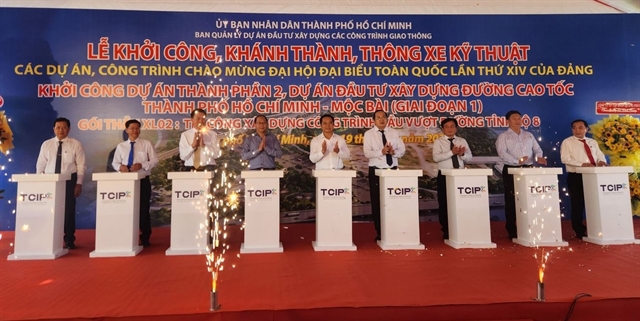 Economy
Economy

The southern city of Tây Ninh is the last point in the Cửu Long (Mekong River) Delta region but from the perspective of ASEAN connectivity the city is the starting point connecting Việt Nam with the Southeast Asia region, said Phan Chánh Dưỡng, lecturer of the Fulbright Economic Teaching Program.
 |
| Among the three pillars of ASEAN, beside the ASEAN Political-Security Community and ASEAN Socio-Cultural Community, AEC could be seen as the most influential and significant pillar as it allows more connections and improve trade among member countries, said Prof. Ang. — Illustrative Image/Photo Reuters |
Viet Nam News -TÂY NINH – The southern city of Tây Ninh is the last point in the Cửu Long (Mekong River) Delta region but from the perspective of ASEAN connectivity the city is the starting point connecting Việt Nam with the Southeast Asia region, said Phan Chánh Dưỡng, lecturer of the Fulbright Economic Teaching Program.
The lecturer was speaking at the training course on ASEAN connectivity in Tây Ninh City on Wednesday which aimed to support local governments incorporate the ASEAN Economic Community (AEC) and ASEAN Connectivity into their works and adjusting their strategies to strengthen local governance.
According to Dưỡng’s analysis, Tây Ninh has the resources to become an ideal place for regional connectivity. The province has a stable climate and is not as affected by climate change as other provinces in the Mekong Delta. The city is also located on the Trans-Asia Highway and is close to HCM City.
If all the advantages are utilised then Tây Ninh could link the economic hub HCM City with ASEAN markets, specifically Cambodia, Laos and Thailand, the expert said.
Professor Alvin Ang from Ateneo de Manila University said that Tây Ninh should become a secondary city after HCM City rather than rival such a big city and use regional connectivity to develop its economy.
The Trans-Asia Highway contributes to ensuring the free flow of goods and services, a primary condition for regional economic integration, the Pilipino scholar said.
The problem is how to make Tây Ninh a place that goods and services must go through when ASEAN markets are connected, he said.
Dr. Trương Minh Huy Vũ, director of the Centre for International Studies (SCIS), added that Tây Ninh can be a bridge for East-West connectivity that is for the whole country.
Vice-chairman of Tây Ninh People’s Committee Nguyễn Thanh Ngọc said that the government had highlighted the importance of regional connectivity for years but the actions has not lived up to expectations.
Dưỡng argued that localities only looked out for themselves and neglected partners so no one had motivation for co-operation. To boost regional connectivity, Dưỡng said, each country should take partners into consideration to ensure mutual benefits.
Among the three pillars of ASEAN, beside the ASEAN Political-Security Community and ASEAN Socio-Cultural Community, AEC could be seen as the most influential and significant pillar as it allows more connections and improve trade among member countries, said Prof. Ang.
The two-day seminar, sponsored by Konrad-Adenauer-Stiftung Vietnam, attracted about 70 researchers and Tây Ninh municipal and district officials. — VNS